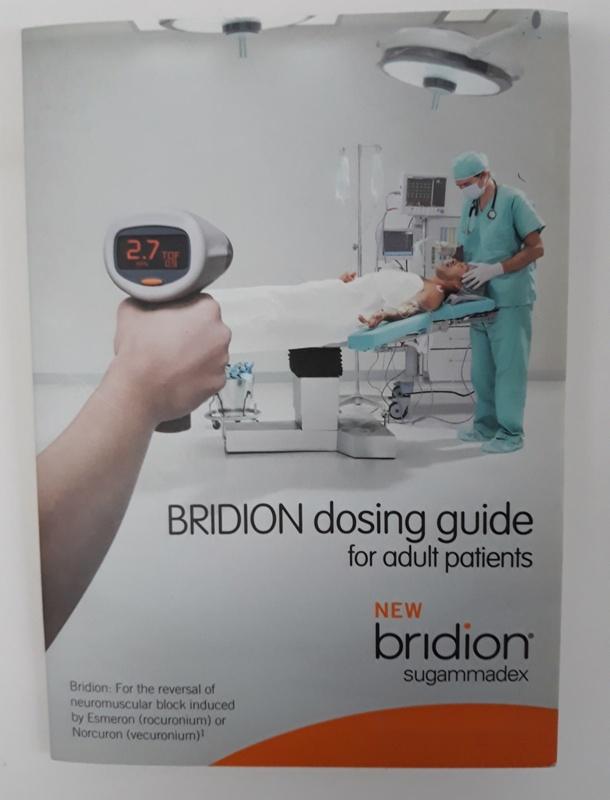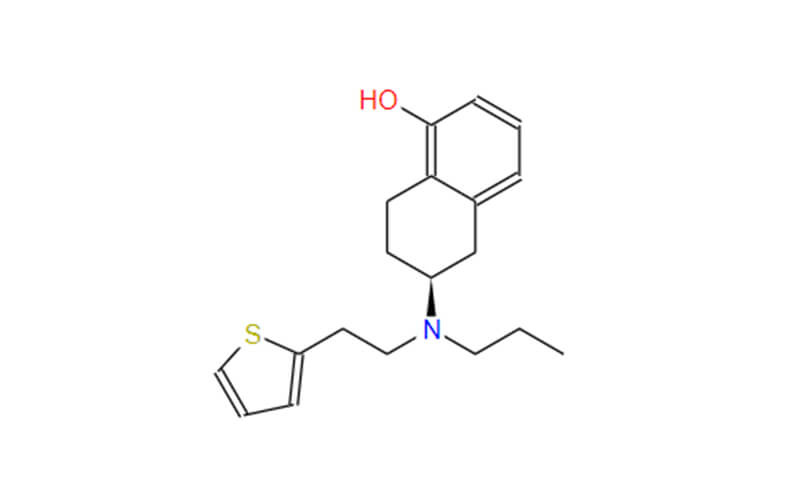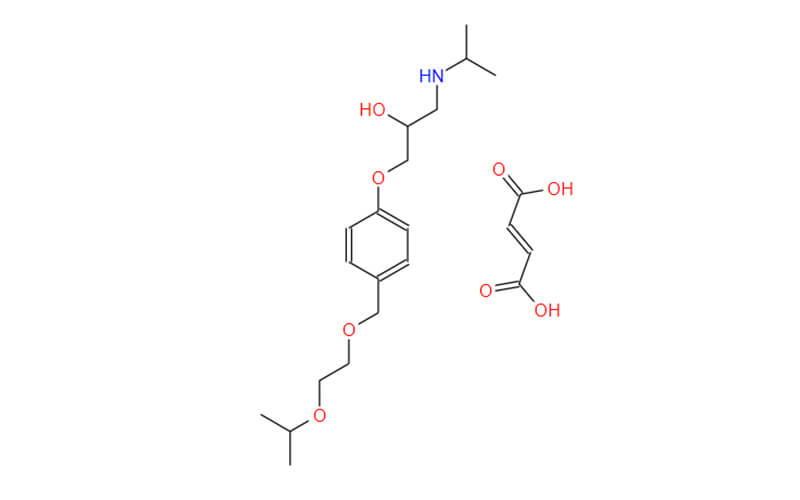Sugammadex Sodium API: A Key Agent in Reversing Neuromuscular Blockade
Sugammadex Sodium API (Active Pharmaceutical Ingredient) plays a crucial role in modern anesthesia, and it is also a cyclodextrin derivative, a specific type of sugar molecule. In the realm of medicine, it functions as an essential medication used to reverse the effects of neuromuscular blocking agents (NMBAs). Sugammadex Sodium offers a safe and efficient method for terminating NMB action when surgery concludes, allowing for a quicker return to spontaneous breathing and muscle function. This article delves into the properties, mechanism of action, and applications of Sugammadex Sodium, particularly its use in reversing neuromuscular blockade (NMB).

What is Sugammadex Sodium?
A. Chemical Properties of Sugammadex Sodium
Sugammadex Sodium boasts a unique cyclic structure composed of seven sugar units linked together. This structure forms a cavity capable of encapsulating specific molecules within its core. The chemical name for Sugammadex Sodium is (2S,3S,4S,5S,6α,7R,8α,9S,10S,11E,13S,14S,16α,17R,19S,20S,21R,22S,23E,25S,26S,27R,28S,29S,30R,31S,32S,33R,34S,35S)-34-[(3-carboxy-4-sulfophenyl)methyl]-11,17-bis(2-hydroxy-1,1-dimethylethyl)-2,3,4,5,6,7,8,9,10,13,14,15,16,17,19,20,21,22,23,25,26,27,28,29,30,31,32,33,35-octacosa-11,13,15,17,19,21,23,25,27,29,31,33-dodecanedioic acid disodium salt. While this technical name might be challenging to remember, its key characteristic lies in the cyclic structure that allows it to bind with specific guest molecules.
B. Mechanism of Action
Sugammadex Sodium’s effectiveness relies on its precisely designed structure to achieve specific binding with NMBAs. This binding process disrupts the interaction between NMBAs and their target on muscle cells, ultimately leading to the reversal of muscle relaxation. Let’s break down this process step-by-step:
- Neuromuscular Junction: Neuromuscular junctions are microscopic sites where nerve cells communicate with muscle cells. This communication is critical for initiating muscle contractions.
- Nicotinic Acetylcholine Receptors: Embedded on the surface of muscle cells at the neuromuscular junction are nicotinic acetylcholine receptors. These receptors act as docking stations for a specific neurotransmitter called acetylcholine, which is released by nerve cells.
- NMBAs Block Neuromuscular Transmission: During surgery, NMBAs are administered. These drugs mimic the shape of acetylcholine to some extent, allowing them to bind to the nicotinic acetylcholine receptors. However, unlike acetylcholine, NMBAs do not trigger the necessary conformational changes within the receptor to initiate muscle contraction. This essentially blocks the transmission of nerve signals at the neuromuscular junction, leading to muscle relaxation.
- Sugammadex Sodium Binds NMBAs: Sugammadex Sodium possesses a unique cavity with a specific size and shape. This cavity is designed to perfectly match the size and shape of specific NMBAs. When Sugammadex Sodium is introduced, it competes with the nicotinic acetylcholine receptors for binding with the NMBAs. Due to the highly complementary fit between Sugammadex Sodium and NMBAs, Sugammadex Sodium outcompetes the receptors and forms a strong complex with the NMBAs.
- NMBAs Removed from Receptors: By binding NMBAs within its cavity, Sugammadex Sodium effectively removes them from their original binding sites on the nicotinic acetylcholine receptors. This process is akin to a key fitting perfectly into a lock. Once the NMBAs are displaced, the nicotinic acetylcholine receptors become available again.
- Resumption of Neuromuscular Transmission: With NMBAs no longer blocking the nicotinic acetylcholine receptors, acetylcholine released by nerve cells can bind to these receptors freely. This binding triggers the normal sequence of events within the muscle cell, leading to muscle contraction and ultimately reversing the NMB-induced muscle relaxation.
In essence, Sugammadex Sodium acts like a “scavenger molecule” specifically designed to capture NMBAs, thereby freeing up the nicotinic acetylcholine receptors and allowing normal neuromuscular transmission to resume.

Uses of Sugammadex Sodium
A. Reversal of Neuromuscular Blockade (NMB)
Sugammadex Sodium’s primary use is to antagonize, or counteract, the effects of NMBAs employed during various surgical procedures.
1. Neuromuscular Blockade (NMB) and its Role in Surgery:
NMBAs are medications that induce a temporary state of skeletal muscle paralysis. This paralysis is crucial for specific surgeries, particularly those involving the abdomen, thorax (chest), and eyes. Here’s why NMBAs are important in these surgeries:
- Optimal Surgical Exposure: NMBAs allow for complete muscle relaxation, providing surgeons with a clear and unobstructed view of the surgical field. This facilitates precise and efficient surgical procedures.
- Reduced Patient Movement: Muscle relaxation minimizes involuntary patient movement during surgery, which can lead to complications and hinder the surgeon’s work.
There are different types of NMBAs with varying durations of action. However, in certain situations, it may be beneficial to reverse the effects of NMBAs sooner than anticipated. Reasons for earlier reversal might include:
- Resumption of Spontaneous Breathing: In some cases, it might be desirable for patients to resume spontaneous breathing earlier, particularly for surgeries with minimal blood loss or those involving short operative times.
- Earlier Neurological Assessment: Reversing NMBAs earlier can allow for a more timely assessment of a patient’s neurological status after surgery.
2. How Sugammadex Sodium Reverses NMB Effects:
As described earlier, Sugammadex Sodium’s structure allows it to form a complex with specific NMBAs. This essentially traps the NMBAs within its cavity, effectively removing them from their binding sites on the nicotinic acetylcholine receptors on muscle cells. With NMBAs no longer blocking these receptors, nerve signals can once again reach the muscles and initiate contraction, leading to the reversal of muscle relaxation.
The speed at which Sugammadex Sodium reverses the NMB effect depends on two key factors:
- Specific NMBAs Used: Different NMBAs have varying affinities for binding to nicotinic acetylcholine receptors. Sugammadex Sodium’s effectiveness in reversing the action depends on the specific NMBAs used during surgery.
- Dose of Sugammadex Sodium Administered: The amount of Sugammadex Sodium administered influences the speed and completeness of NMB reversal. Higher doses typically lead to a faster and more complete reversal.

B. Potential Future Applications
Research is actively exploring potential applications for Sugammadex Sodium beyond NMB reversal. Here are a few promising areas of investigation:
1. Treatment of Overdose of Certain Medications: Sugammadex Sodium’s ability to bind specific molecules raises the possibility of using it to manage overdoses of certain medications that act similarly to NMBAs. By binding to these overdosed medications, Sugammadex Sodium could potentially help remove them from their sites of action and alleviate their harmful effects.
- Reduction of Muscle Rigidity in Certain Conditions: Some neurological disorders, like tetanus, cause severe muscle stiffness and rigidity. Researchers are investigating whether Sugammadex Sodium’s binding properties could be harnessed to target and potentially reduce muscle rigidity associated with these conditions.
Sugammadex Sodium API: Market Growth and Suppliers
A. Market Growth for Sugammadex Sodium API
The market for Sugammadex Sodium API has experienced a consistent expansion in recent years. This growth can be attributed to two key factors:
- Increased Use of NMBAs in Surgery: The number of surgical procedures utilizing neuromuscular blocking agents (NMBAs) has steadily risen. This rise is partly due to advancements in minimally invasive surgeries, where NMBAs offer advantages in terms of improved surgical exposure and reduced patient movement.
- Advantages of Sugammadex Sodium over Traditional Reversal Methods: Sugammadex Sodium has emerged as a preferred method for reversing the effects of NMBAs compared to traditional reversal techniques. Here’s a breakdown of the key advantages:
- Faster and More Predictable Reversal: Sugammadex Sodium offers a more rapid and predictable reversal of NMB action compared to traditional reversal agents like acetylcholinesterase inhibitors. This allows for faster recovery of spontaneous breathing and muscle function in patients.
- Reduced Risk of Reversal Complications: Traditional reversal methods can sometimes lead to incomplete reversal or even excessive cholinergic stimulation, causing unintended side effects. Sugammadex Sodium exhibits a more targeted action, potentially reducing the risk of such complications.
B: Examples of Sugammadex Sodium API Manufacturers and Suppliers
Several pharmaceutical companies are involved in the manufacturing and supply of Sugammadex Sodium API. Here are some prominent examples, including a potential new entrant:
- Merck: This multinational pharmaceutical giant manufactures Sugammadex Sodium API under the brand name Bridion.
- Cyclopharm: This Australian specialty pharmaceutical company produces Sugammadex Sodium API under the brand name Reversade.
- Sichuan Qingmu Pharmaceutical Co., Ltd.: This Chinese pharmaceutical company has emerged as a potential player in the Sugammadex Sodium API market. Their website highlights their expertise in the development, manufacturing, and marketing of various anesthesia-related products. Further research is recommended to assess their specific capabilities and regulatory approvals related to Sugammadex Sodium API production.

Conclusion
Sugammadex Sodium API stands as a significant advancement in the field of anesthesia. Its unique ability to selectively bind NMBAs offers a safe and efficient method for reversing neuromuscular blockade. This not only facilitates a quicker return to spontaneous breathing and muscle function for patients but also allows for greater flexibility in managing the course of anesthesia. As research into potential future applications continues, Sugammadex Sodium holds promise for further contributions to improved patient care.








